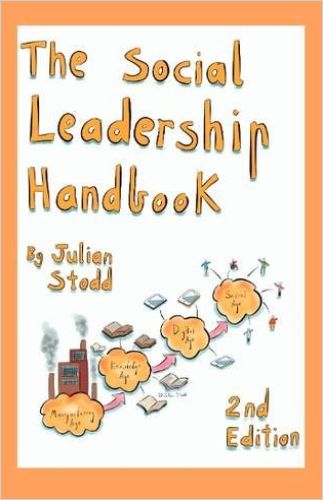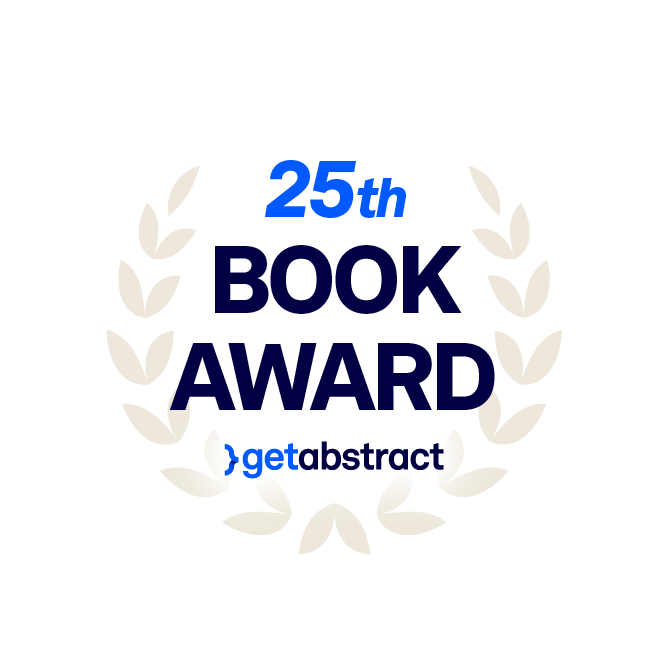A leader in writing guidebooks about new methods of leading and learning, Julian Stodd explains how social leadership will become the dominant paradigm and how to embrace it.

The New Leadership
In the corporate world, formal authority is no longer the most viable or powerful authority, says Julian Stodd, founder of Sea Salt Learning. For today’s effective “social leaders,” the old command-and-control rules no longer apply. Social leaders cultivate an imaginative mind-set, agility and action while continually developing their knowledge and skills. They live by their ethical principles. They are empathetic and collaborative.
In this inspirational manual on social leadership, Stodd explains its dynamics, characteristics and workings. A self-described “cartographer of the Social Age” – whatever that might be – Stodd offers a practical multilevel guidebook to becoming a social leader, helping your organization develop social leaders, and understanding why today’s world demands and will continue to demand this kind of leadership.
Stodd, a handbook and guidebook maven, has multiple titles to his credit that involve concepts similar to those he raises here, varying by context and application. His intended audience is millennials and generation Zers, and he provides useful insights for those who collaborate with, lead or report to colleagues in those cohorts – while clarifying that, of course, individuals in generational groupings always vary.
“Gray Space”
Corporate life used to be simpler. In the old days, when command-and-control ruled, everyone knew who was in charge, and people knew their place in the hierarchy. Today’s “Social Age,” with its dependence on “social collaborative technology,” limits positional authority, according to Stodd. Its replacement, social leadership, is contextual and consensual – not hierarchical.
Maybe there was a time when we all lived in caves and gathered around campfires to skin mammoths, when we were constrained by being in just one tribal group, but today our membership is wide and varied.Julian Stodd
The result is a gray space in which the old rules don’t matter and no one has yet figured out the new rules. Indeed, new rules may not yet exist.
Social Contract
The Social Age is the golden era of social businesses, which go beyond standard employment and profits. Social businesses vest not only in profit-making but also in ethics and morals. These modern organizations are permeable; their brands occupy multiple areas or sectors.
If an organization wishes to be dynamic, to survive, to thrive, it needs to engage the best people in the best ways.Julian Stodd
The old barriers that used to protect rigid organizations have vanished. Today, everything is in flux: the nature of work, of careers, of employment and of leadership. Organizations and their leaders must become and remain happily agile. They must share knowledge, not hoard it; engage with their communities; help employees develop long-term skills; stress value and responsibility; reject older forms of power, status and reputation; and build collaboration and co-creation.
The Social Age
As Stodd sees it, the Social Age evolved as a result of a new social contract, new technologies and the emergence of new communities. In his chronology, the Social Age followed three earlier stages: the Manufacturing Age – when making things dominated economic life; the Knowledge Age – when information was king; and the Digital Age – when the internet exploded, Google appeared and smartphones became ubiquitous. Technology dominated the Digital Age, and it makes the new Social Age possible.
Just providing a product or service is no longer enough. Instead, we need…community, relevance, authenticity and responsiveness – on our terms, as consumers.Julian Stodd
The Social Age focuses on community, networking and sharing. Today’s competitive advantage stems from creating ideas quickly while also developing meaning and value. Social leaders intuitively understand that most power no longer resides in designated authority, situational authority, hierarchal authority or longevity.
Three Dimensions
Stodd wants readers to understand that there’s nothing soft about social leadership. It isn’t an optional add-on to old-style formal authority. His NET Model of Social Leadership has three dimensions – narrative, engagement and technology.
As the fundamental mechanics of the workplace evolve, driven by both technology and social pressures, we need to adapt – but not to retreat to the most conservative place and lowest common denominator.Julian Stodd
Narrative calls for telling stories about the validity of an organization’s actions. This means turning information into meaningful accounts that inspire shareholders and sharing broadly through collaborative technology. Social leaders accept that their authority is fluid and contextual. They engage with their communities to facilitate the work of building a positive culture and reputation. A leader’s social capital, enabled by technology, comes from co-creating and sharing ownership and from collaborating without seeking instant payback.
Stodd moves into almost contradictory territory here. He describes social leadership as fundamentally fluid, but attempts to codify its fluid elements. Weirdly, his layered system seems designed to appeal to (or at least to explain itself to) those who still rely on what Stodd views as archaic command-and-control leadership.
Attributes
As Stodd describes them, ideal social leaders are curious, humble and fair. They are kind and authentic; they never posture. They offer compelling stories, stand up for their values, seek consensus, embrace collective wisdom, reward good work and trust in metrics. They are willing to fail and learn – and to share knowledge.
Often organizations are obsessed with how to control the conversation, to own the story, but the cost of that can be that they never get to hear what’s truly being said.Julian Stodd
Stodd explains that social leaders pursue three imperatives: “Care” concerns engaging in the correct actions. “Productivity” means being an effective leader who achieves solid outcomes. And “co-creation” involves knowing your community and aligning your leadership with its needs.
Helpful Uncertainties
Stodd proves happily unwilling to insist on certainties in areas where none yet exist. He details the gray areas in which so many businesses operate, and he avoids superficial solutions. To provide insight into the complexities of the work world, he describes multiple processes that all occur at once. He’s an engaging writer and repeats himself no more than necessary, which is a welcome change compared to most books describing a new leadership paradigm.
It’s a circle because the journey never ends: Once we have mastered the skills, we continue to refine them, and help others to achieve.Julian Stodd
However, the philosophy at the heart of his advice is not exactly a new phenomenon. It evidences a powerful belief in the human ability to improve and to interact productively.
Stodd romantically insists that businesses will – at some point – move past the profit motive to embrace more humane values as well. Whether he’s describing a real-world process or only hope-based New Age garb for old paradigms, time will tell. In the meanwhile, all businesses can benefit in both leadership development and employee relations by following his guidance.
Julian Stodd’s other books include The Trust Guidebook, The Socially Dynamic Organization, Finding Your Campfire, To the Moon and Back, Exploring the World of Social Learning and The Community Builder Guidebook.














